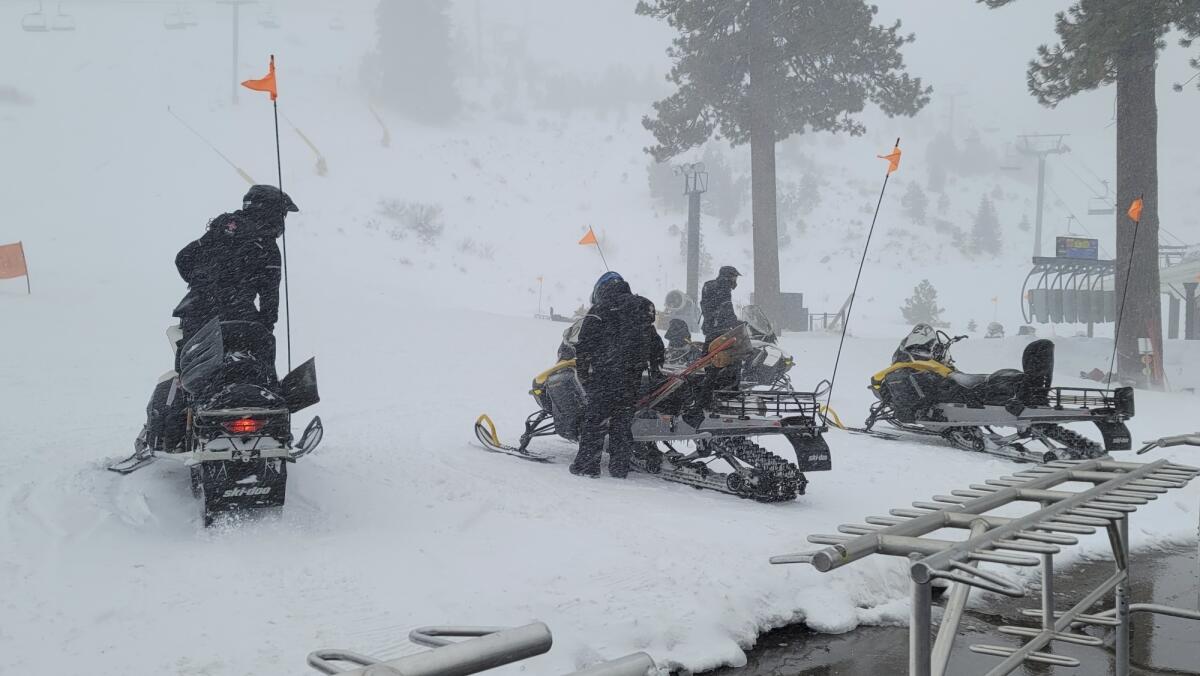Weekend storm dumps more snow on Tahoe area, travel to the area discouraged

- Share via
Weather officials are urging motorists to avoid the Sierra Nevada and southern Cascade mountains this weekend as another system of heavy mountain snow began moving through the region Saturday morning.
The snow will continue through early Sunday with accumulations up to 2 feet above 6,000 feet elevation and 4 to 8 inches above 3,000 feet, said Sara Purdue, meteorologist with the National Weather Service in Sacramento.
On Saturday morning along Interstate 80 — the popular route to Lake Tahoe — snow was accumulating up to 1 inch per hour and expected to increase up to 2 inches per hour later in the day, according to the weather service. Wind gusts are forecast to top 50 mph in some areas, Purdue said.
She said travelers should expect dangerous driving conditions with slick roads and near whiteout conditions at times. Motorists should be ready for road closures and carry tire chains, extra warm clothing, food and water if venturing into the area.
The newest storm system comes after one skier was killed and another guest was injured Wednesday when they were buried in an avalanche at the Palisades Tahoe resort, officials said. It occurred at about 9:30 a.m. above the G.S. Gully area of the KT-22 peak, the resort said in a statement.
The skier who died was identified Wednesday night by the Placer County Sheriff’s Office as 66-year-old Kenneth Kidd, a resident of both Point Reyes and the Truckee Tahoe area.
Hours before that avalanche, forecasters had warned that the risk of an avalanche in the area was “considerable” for a portion of the central Sierra Nevada, encompassing all of Lake Tahoe and much of the surrounding mountains.
A Level 3 threat indicates “dangerous avalanche conditions” that could lead to “small avalanches in many areas; large avalanches in specific areas,” and warns that “natural avalanches [are] possible; human-triggered avalanches likely.”
More to Read
Sign up for Essential California
The most important California stories and recommendations in your inbox every morning.
You may occasionally receive promotional content from the Los Angeles Times.











